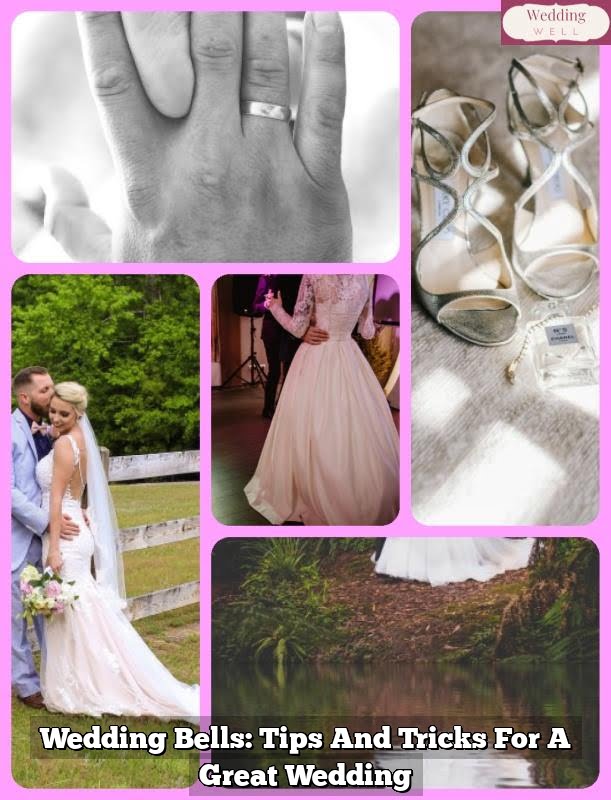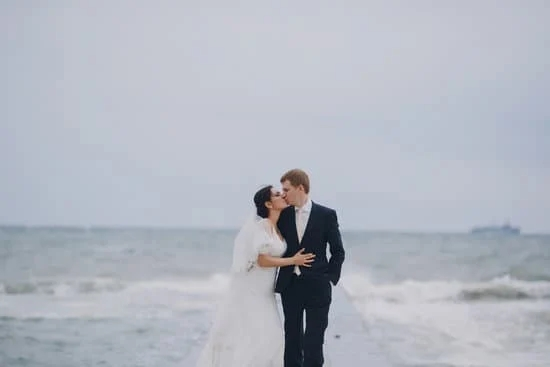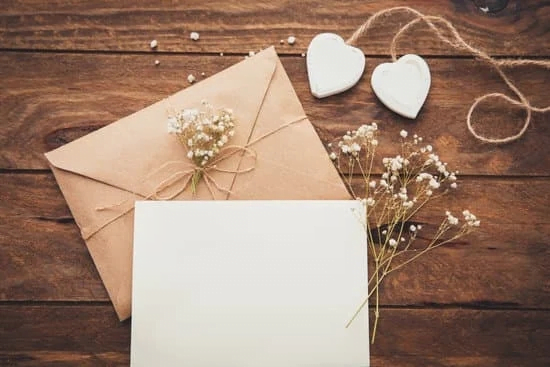Who wears a corsage at a wedding? Corsages have long been a tradition in weddings, symbolizing love, honor, and respect. From the bride and groom to the wedding party and family members, corsages hold special significance in wedding ceremonies. Understanding the history and significance of corsages is essential to appreciate their role in modern weddings.
Corsages have been a part of wedding traditions for centuries, with their origins dating back to ancient Greece and Rome. In modern weddings, corsages are not only a beautiful accessory but also serve as a symbol of appreciation for loved ones. Understanding the roles of different members of the wedding party and family members who wear corsages can add depth to the overall wedding experience.
In this article, we will delve into the significance of corsages at weddings, exploring their historical background and importance in modern ceremonies. We will also discuss the traditional roles of the bride, groom, wedding party, and family members who wear corsages, as well as provide tips on proper etiquette, personalization options, and alternatives to traditional corsages.
Whether you are a soon-to-be-bride or someone involved in planning a wedding, understanding the role of corsages at weddings is essential for creating a memorable and meaningful occasion.
The Role of the Bride in Wearing a Corsage
The bride is the central figure in any wedding, and her choice of attire and accessories often sets the tone for the entire event. When it comes to wearing a corsage at a wedding, the bride plays a significant role in incorporating this traditional floral accessory into her ensemble.
Exploring the Tradition of the Bride Wearing a Corsage
In many weddings, the bride wears a corsage as a symbol of love and honor. The corsage is traditionally worn on the wrist or attached to the dress, serving as a beautiful and meaningful adornment. It is commonly given to the bride by her groom or family members as a gesture of affection and recognition on this special occasion. The tradition of brides wearing corsages dates back centuries and continues to be an important part of modern wedding customs.
Different Styles and Types of Corsages for the Bride
There are various styles of corsages that brides can choose from, depending on their personal preference and wedding theme. Some brides opt for delicate wrist corsages with small flowers, while others may prefer larger floral arrangements pinned to their dress. Additionally, brides have the option to coordinate their corsage with their bouquet or select unique blooms that align with their wedding color scheme.
Tips for Incorporating the Corsage Into the Bride’s Overall Wedding Look
When selecting a corsage for her wedding day, it’s essential for the bride to consider how it will complement her overall look. The choice of flowers, colors, and style should harmonize with the bridal gown and other accessories.
Brides can work closely with their florist or wedding planner to ensure that the corsage enhances their appearance without overpowering it. From classic roses to unconventional succulents, there are countless ways for brides to incorporate a stunning corsage into their bridal ensemble.
The Role of the Groom in Wearing a Corsage
The tradition of the groom wearing a corsage at a wedding has been a longstanding practice that holds special significance. In modern weddings, the groom’s corsage serves as a symbol of his love and commitment to his partner, mirroring the sentiment behind the bride’s bouquet and corsage. The groom’s corsage is typically worn on the lapel of his jacket or suit, adding an elegant and sophisticated touch to his attire.
When it comes to options for the groom’s corsage, there are several choices to consider. One popular option is a single flower boutonniere, often featuring a bloom that complements the bridal bouquet or overall wedding theme.
Roses, lilies, and orchids are common choices for groom’s corsages, with many couples opting for flowers that hold personal significance or sentimental value. Another alternative is to incorporate greenery or other natural elements into the groom’s corsage to create a more rustic or bohemian look.
The groom’s corsage is designed to complement the bride’s corsage and overall aesthetic of the wedding. By coordinating the color palette and style of both floral accessories, couples can create a cohesive and harmonious look for their special day. Ultimately, the groom’s corsage serves as a beautiful symbol of love and partnership during the wedding ceremony and celebration.
| Groom’s Corsage | Details |
|---|---|
| Placement | Lapel of Jacket/Suit |
| Flower Options | Roses, Lilies, Orchids |
| Complementing Bouquet | Coordinating color palette and style with bride’s corsage |
Corsages for the Wedding Party
When it comes to weddings, the tradition of wearing corsages extends beyond just the bride and groom. In addition to the bride and groom, other members of the wedding party also wear corsages as a symbol of their involvement in the special day. Typically, bridesmaids, groomsmen, ushers, and even flower girls and ring bearers may wear corsages as part of their attire for the wedding ceremony and festivities.
For bridesmaids, corsages are often worn on the wrist or attached to their dresses. They can be designed to complement the overall color scheme of the wedding or match the flowers used in the bridal bouquet. Corsages for groomsmen and ushers are typically worn on the lapel of their suits or tuxedos. These corsages may coordinate with the groom’s boutonniere or include similar floral elements to create a cohesive look for the entire wedding party.
When considering corsages for other members of the wedding party such as flower girls and ring bearers, it is important to choose designs that are age-appropriate and comfortable for them to wear throughout the celebrations. These corsages can be smaller in size and incorporate playful elements like ribbons or other accessories to reflect their roles in the wedding.
In addition to enhancing the overall aesthetic of the wedding party’s attire, corsages also serve as meaningful keepsakes for those who wear them. They symbolize unity and celebration, creating a sense of connection among all members of the wedding party. By incorporating carefully selected corsages into each individual’s ensemble, a sense of cohesion is achieved that adds beauty and significance to this special occasion.
| Corsage Wearers | Corsage Placement |
|---|---|
| Bridesmaids | On wrist or attached to dress |
| Groomsmen/Ushers | On lapel of suit or tuxedo |
| Flower Girls/Ring Bearers | Small size with playful elements on dress or outfit |
Corsages for Family Members
Corsages have long been a traditional and symbolic accessory worn at weddings, not only by the bride and groom but also by various family members. Family members, such as parents, grandparents, siblings, and other close relatives, often wear corsages to signify their special role and connection to the couple on their wedding day. The tradition of family members wearing corsages at weddings dates back centuries and continues to be a meaningful custom in modern wedding ceremonies.
Choosing the Right Corsage for Family Members
When selecting corsages for family members, it is essential to consider the significance of their relationship to the couple. Parents of the bride and groom typically receive more elaborate and larger corsages than other family members, symbolizing their importance in the lives of the couple.
Grandparents may also wear corsages, which can be customized to reflect their unique personalities or preferences. Siblings and close relatives may opt for smaller or simpler corsages that still align with the overall aesthetic of the wedding.
The Symbolism Behind Corsages for Family Members
The act of giving family members corsages at weddings goes beyond just a decorative accessory. It represents honor, respect, love, and gratitude towards those who have played pivotal roles in the lives of the couple. The colors and types of flowers chosen for each individual’s corsage can hold personal significance or carry sentimental meanings based on familial traditions or cultural customs.
Corsage Etiquette for Family Members
When it comes to pinning on corsages for family members, it is important to ensure that they are comfortable with wearing them in preferred positions on their attire. Proper communication with family members about their preferences for flower choices or colors is also crucial to make sure they feel included and valued on this special occasion. Furthermore, providing guidance on caring for their corsages throughout the event will ensure that they can properly cherish this thoughtful gesture from the couple.
In essence’,
Corsage Etiquette and Tips
When it comes to weddings, corsages are an important accessory that adds a touch of elegance and tradition to the overall theme. Knowing the proper corsage etiquette and tips can help ensure that everyone involved in the wedding party looks their best and feels comfortable wearing this floral adornment.
Proper placement and pinning of corsages are essential to avoid any fashion mishaps on the big day. Here are some key etiquette tips for wearing a corsage:
- For the bride: The most common placement for the bride’s corsage is on her wrist or attached to her dress. However, modern brides also opt for a floral hairpiece or even a shoulder corsage for a unique and trendy look.
- For the groom: Traditionally, grooms wear their boutonnieres on the left lapel, so it’s important to coordinate the placement of the groom’s corsage with his boutonniere for a cohesive look.
- For other members of the wedding party: Bridesmaids typically wear wrist corsages or pin-on corsages, while groomsmen may also sport boutonnieres or pin-on corsages.
Selecting the right flowers and colors for the corsage is another crucial aspect of wedding etiquette. It’s important to choose blooms that complement the overall color scheme and theme of the wedding. Whether it’s classic roses or trendy succulents, coordinating the corsage flowers with other floral arrangements can create a harmonious aesthetic.
As with any aspect of wedding planning, there are also common mistakes to avoid when it comes to choosing and wearing corsages. From overwhelming scents to mismatched colors, paying attention to these details can make all the difference in achieving a polished and put-together look for everyone involved in your special day.
Incorporating personalized elements into each corsage is a wonderful way to add sentimental value and uniqueness to these floral accessories. Whether it’s incorporating meaningful charms or using blooms with special significance, personalizing each corsage can be a touching way to honor loved ones and create lasting memories from your wedding day.
Personalizing Corsages
When it comes to personalizing corsages for a wedding, there are several ways to make them unique and meaningful. Whether it’s for the bride, groom, bridal party, or family members, customizing corsages can add a special touch to the wedding attire. Here are some ideas for personalizing corsages:
- Customizing with Meaningful Flowers: Consider incorporating the couple’s favorite flowers or significant blooms that hold sentimental value. Whether it’s the bride’s favorite bloom or a flower with a special meaning to the couple, using these flowers in the corsages adds a personal touch.
- Adding Personal Elements: Include personal elements such as charms, trinkets, or small photo frames within the corsage design. These can represent something meaningful to the wearer or serve as a nod to cherished memories.
- Coordination with Wedding Theme and Colors: Personalize the corsages by coordinating them with the overall theme and color scheme of the wedding. This can be done through careful selection of flowers and ribbon colors that align with the wedding’s aesthetic.
By personalizing corsages in these ways, they become more than just an accessory-they become a reflection of the individuals wearing them and their unique connection to the wedding.
In addition to these personalized touches, many couples also opt for DIY options when it comes to creating unique corsages. This can involve gathering family members and members of the bridal party for a fun DIY corsage-making session where they can add their own personal flair to each piece.
Overall, personalizing corsages adds an extra layer of sentiment and individuality to these floral accessories, making them an integral part of not only the attire but also of the overall wedding experience.
Alternatives to Corsages
When it comes to wedding floral accessories, corsages have long been a traditional choice for members of the wedding party. However, as weddings become more personalized and unique, many couples are exploring alternative options to corsages. While the bride, groom, and other key members of the wedding party may still opt for corsages, there are creative alternatives that can add a special touch to their attire.
For brides who want to steer away from traditional corsages, one alternative is a floral hair accessory. Whether it’s a delicate flower comb, a whimsical floral crown, or a simple bloom tucked behind the ear, these alternatives offer a romantic and ethereal touch to the bridal look.
Similarly, grooms can opt for a boutonniere as an alternative to a traditional corsage. Boutonnieres can be customized to match the wedding theme and can still serve as a meaningful floral accent for the groom’s attire.
In addition to hair accessories and boutonnieres, other members of the wedding party can explore unique alternatives such as wrist corsages or even floral necklaces. These modern twists on traditional corsages can add unexpected elegance and flair to their ensemble while still incorporating beautiful blooms into their look.
Whether it’s through non-traditional placements or innovative designs, there are numerous ways to personalize floral accessories for each member of the wedding party without relying solely on classic corsages. Ultimately, embracing these alternatives allows couples to infuse their wedding with creativity and individuality while still incorporating the beauty of flowers into their special day.
Frequently Asked Questions
Do People Wear Corsages at Weddings Anymore?
Yes, people still wear corsages at weddings. While the tradition may not be as common as it once was, many brides and their bridal parties still choose to wear corsages as a way to accessorize their attire for the special occasion.
Do the Mothers Need Corsages at a Wedding?
Traditionally, the mothers of the bride and groom do wear corsages at a wedding. It is a way to honor these important women in the lives of the couple and to distinguish them during the event. However, it is ultimately up to the couple and their families to decide if they want to continue this tradition.
What Is the Tradition of the Corsage at a Wedding?
The tradition of wearing corsages at weddings dates back many years and is often seen as a way to honor and recognize key individuals, such as family members or close friends, within the wedding party. Corsages are typically worn on the wrist or pinned to the clothing and are often coordinated with the overall color scheme of the wedding.
Although traditions may evolve over time, wearing corsages at weddings remains a timeless symbol of respect and appreciation for loved ones involved in the celebration.

Welcome to my blog about home and family. This blog is a place where I will share my thoughts, ideas, and experiences related to these important topics. I am a stay-at-home mom with two young children. I hope you enjoy reading it! and may find some helpful tips and ideas that will make your home and family life even better!





